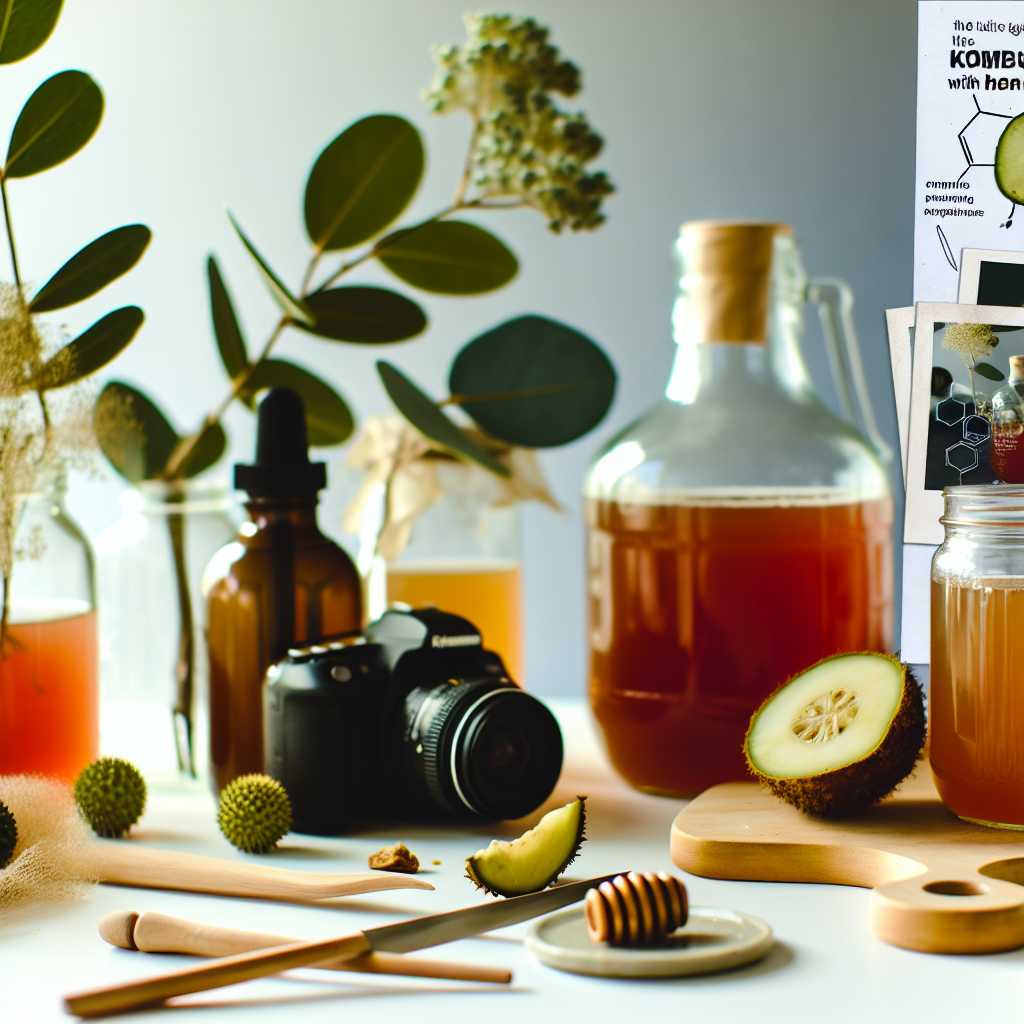The Ultimate Guide to Making Kombucha with Honey

The Ultimate Guide to Making Kombucha with Honey
Kombucha has been around for centuries, but it has recently gained popularity as a health drink. Made from fermented tea, kombucha is packed with probiotics, vitamins, and antioxidants, making it a favorite among health-conscious individuals. While traditional kombucha recipes call for sugar, many people are looking for healthier alternatives. One popular option is making kombucha with honey instead of sugar. In this ultimate guide, we will delve into the world of making kombucha with honey, exploring the benefits, the process, and everything in between.
What is Kombucha?
First things first, let’s talk about what exactly kombucha is. Kombucha is a fermented tea beverage that is believed to have originated in China over 2000 years ago. It is made by adding a symbiotic culture of bacteria and yeast (SCOBY) to sweetened tea and allowing it to ferment for a period of time. During the fermentation process, the SCOBY consumes the sugar in the tea and produces a variety of acids, enzymes, and vitamins. The end result is a tangy, fizzy, and slightly sweet beverage that is enjoyed for its refreshing taste and numerous health benefits.
Why Use Honey in Kombucha?
While traditional kombucha recipes call for sugar, many people are opting to use honey instead. There are several reasons for this. First and foremost, honey is a natural sweetener that is packed with health benefits. It contains antioxidants, enzymes, and vitamins, and has been used for centuries for its medicinal properties. When used in kombucha, honey adds a unique flavor profile and can provide a host of additional health benefits. Additionally, using honey as a sweetener in kombucha may appeal to those who are looking to reduce their sugar intake or are following a specific diet, such as the paleo diet or the Whole30 program.
The Process of Making Kombucha with Honey
Making kombucha with honey is a relatively straightforward process, but it does require some attention to detail to ensure successful fermentation. Here’s a step-by-step guide to making your own honey-sweetened kombucha at home:
1. Gather Your Supplies
Before you begin, you’ll need to gather the necessary supplies. This includes a large glass jar, organic black or green tea, a SCOBY, starter liquid (previously brewed kombucha), and, of course, honey.
2. Brew Your Tea
Start by brewing a batch of strong tea using organic black or green tea. You’ll need about 4-6 tea bags per gallon of water. Let the tea steep for 10-15 minutes, then remove the tea bags and allow the tea to cool to room temperature.
3. Add Honey
Once the tea has cooled, add the honey and stir until it is fully dissolved. The amount of honey you add will depend on your personal preference, but a good starting point is 1 cup of honey per gallon of tea.
4. Add Starter Liquid and SCOBY
Transfer the honey-sweetened tea to a large glass jar and add the starter liquid from a previous batch of kombucha. Then, carefully place the SCOBY on top of the tea.
5. Cover and Ferment
Cover the jar with a tight-weave cloth or coffee filter and secure it with a rubber band. This will allow air to flow in and out of the jar while keeping out any contaminants. Place the jar in a warm, dark place and allow it to ferment for 7-10 days.
6. Bottle and Second Fermentation
After the primary fermentation is complete, carefully remove the SCOBY and transfer it to a clean container with some of the liquid to use as a starter for your next batch. You can then flavor and bottle the kombucha for a secondary fermentation, if desired.
Benefits of Making Kombucha with Honey
There are numerous benefits to making kombucha with honey. In addition to the unique flavor profile that honey adds, using honey as a sweetener in kombucha can provide a host of additional health benefits. Honey is known for its antimicrobial and antiviral properties, making it a natural preservative that can help protect the kombucha from harmful bacteria and pathogens. Additionally, honey contains beneficial enzymes and antioxidants that can contribute to the overall health-promoting properties of kombucha.
Tips for Making the Best Honey-Sweetened Kombucha
To ensure the best results when making kombucha with honey, here are a few tips to keep in mind:
1. Use Raw Honey: Whenever possible, use raw, unprocessed honey for brewing kombucha. Raw honey contains beneficial enzymes and other compounds that can contribute to the fermentation process and the overall health benefits of the kombucha.
2. Monitor Fermentation: Keep a close eye on your kombucha as it ferments. The fermentation process may be faster or slower when using honey compared to sugar, so it’s important to monitor the taste and acidity of the kombucha regularly.
3. Experiment with Flavorings: Once your honey-sweetened kombucha is ready for a second fermentation, consider experimenting with different flavorings. You can add fresh fruit, herbs, or spices to create unique and delicious flavor combinations.
In conclusion, making kombucha with honey is a simple and rewarding process that results in a delicious and healthful beverage. Whether you’re looking to reduce your sugar intake, experiment with different flavor profiles, or simply enjoy the benefits of honey, making honey-sweetened kombucha at home is a fun and creative endeavor. By following the steps outlined in this ultimate guide and keeping the tips in mind, you can create your own batch of honey-sweetened kombucha that is sure to impress. So, grab your supplies, brew a batch of tea, and get ready to enjoy the refreshing and bubbly goodness of homemade honey-sweetened kombucha. Cheers to your health and happiness!
[elementor-template id=”430″]
[elementor-template id=”433″]




0 Comments